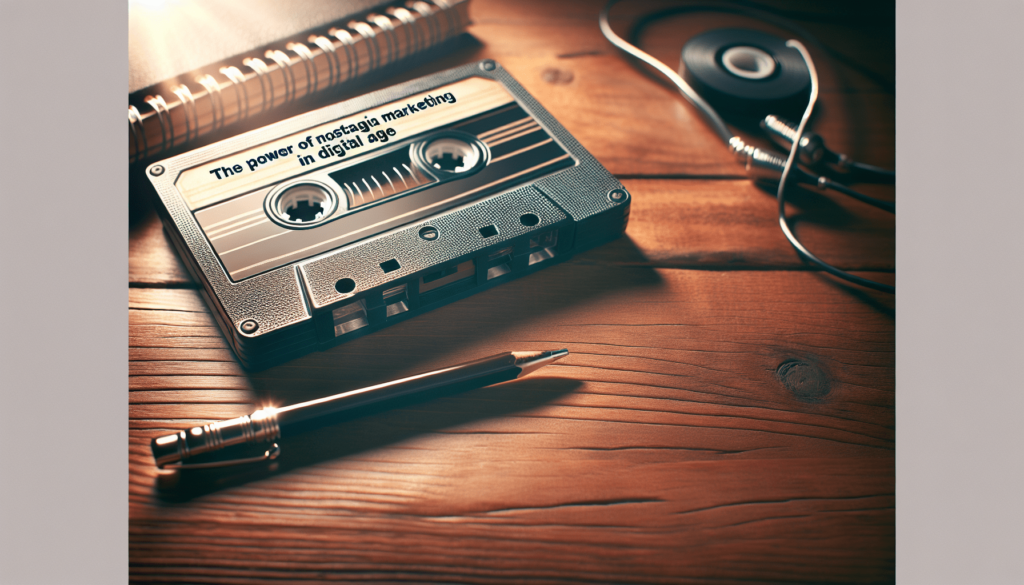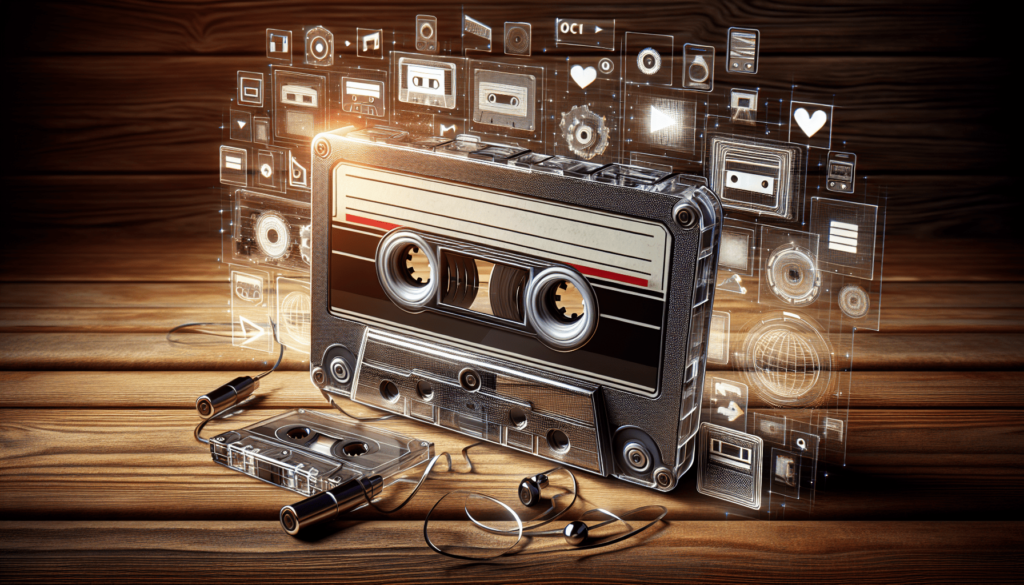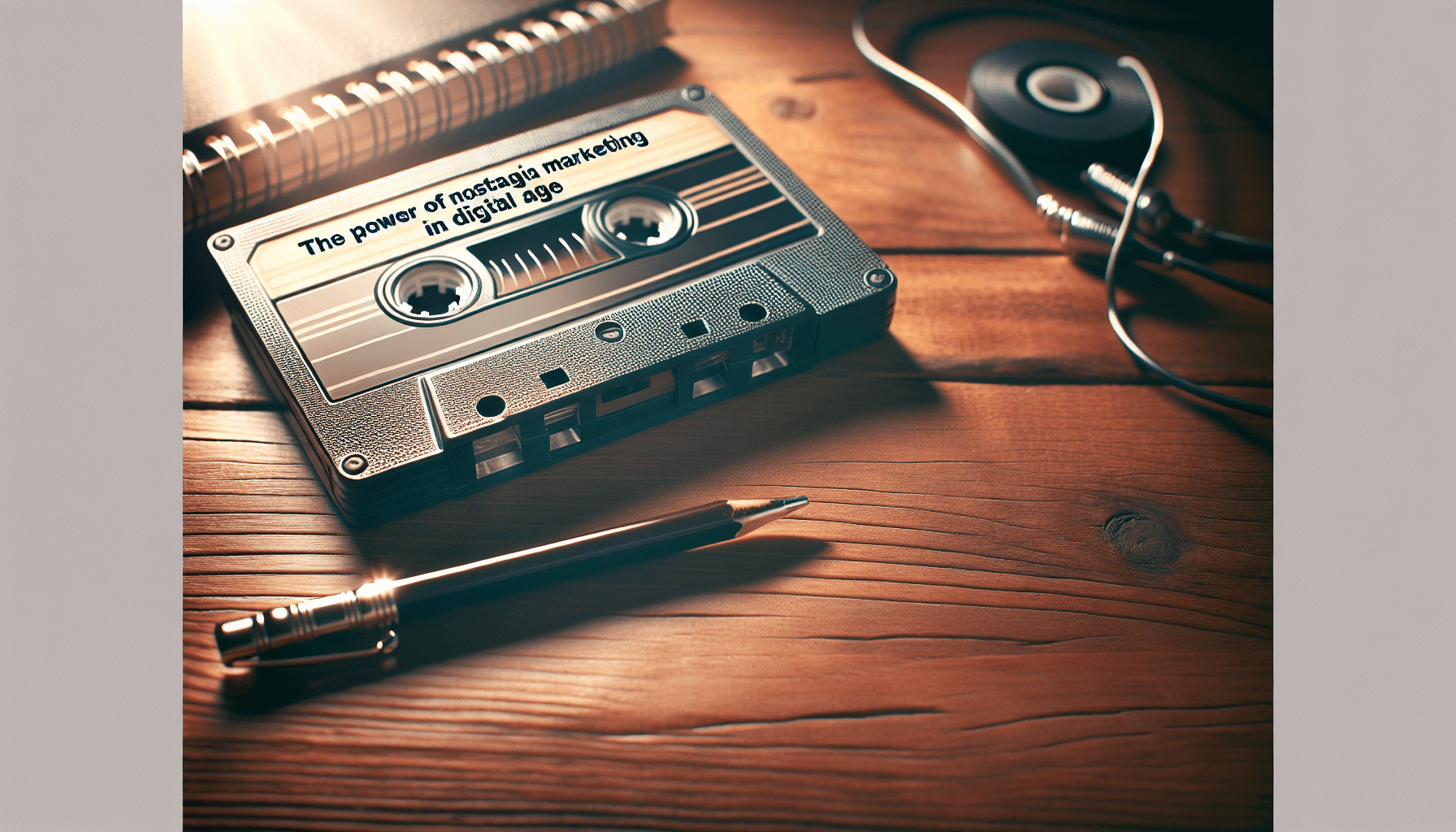Have you ever thought about the impact of nostalgia on your purchasing decisions? In a world filled with constantly evolving technology and trends, nostalgia marketing has become increasingly popular among brands looking to connect with consumers on a deeper emotional level. In this article, we will explore the power of nostalgia marketing in the digital age and how it can influence your buying behavior without you even realizing it.

Understanding Nostalgia Marketing
Nostalgia marketing is a strategy used by brands to evoke feelings of sentimentality and emotional connection by leveraging past memories and experiences from consumers’ lives. By tapping into positive emotions associated with the past, brands can create a sense of familiarity and comfort that resonates with their target audience.
Think about it – have you ever come across a commercial or advertisement that features a jingle or character from your childhood? Chances are, it brought back a flood of memories and emotions that made you feel a connection to the brand, even if you hadn’t thought about it in years. That’s the power of nostalgia marketing at work.
How Nostalgia Influences Buying Behavior
Nostalgia has a powerful influence on human behavior, and marketers have long recognized its potential to drive consumer engagement and loyalty. When consumers experience feelings of nostalgia, they are more likely to make purchasing decisions based on emotion rather than logic. This emotional connection can lead to increased brand loyalty, repeat purchases, and even word-of-mouth recommendations to friends and family.
The next time you find yourself drawn to a product or service from your past, take a moment to think about why it resonates with you. Chances are, nostalgia is playing a key role in your decision-making process without you even realizing it.
Nostalgia Marketing in the Digital Age
With the rise of digital technology and social media, nostalgia marketing has evolved to take advantage of new platforms and communication channels to reach consumers in more personalized and targeted ways. Brands can now use social media networks, email marketing, and even virtual reality experiences to create immersive and interactive campaigns that tap into consumers’ nostalgic memories and emotions.
Utilizing Social Media for Nostalgia Marketing
Social media platforms like Facebook, Instagram, and Twitter have become powerful tools for brands to connect with consumers through nostalgia marketing. By sharing old photos, videos, and memes that evoke feelings of nostalgia, brands can create engaging and shareable content that resonates with their target audience.
Imagine scrolling through your Facebook feed and coming across a post from a brand featuring a throwback photo of a popular product from your childhood. Not only does it bring back fond memories, but it also sparks conversations and interactions with other users who share similar experiences. This engagement not only strengthens brand loyalty but also increases the likelihood of converting followers into customers.
Email Marketing Campaigns That Tug at Your Heartstrings
Email marketing is another effective tool for leveraging nostalgia to appeal to consumers. Brands can create personalized email campaigns that feature nostalgic images, stories, and promotions that speak directly to their target audience’s emotions and experiences. By tapping into these nostalgic memories, brands can create a sense of intimacy and connection that encourages recipients to engage with the brand and take action.
Think about the last time you received an email from a brand that referenced a special memory or milestone from your past. Did it make you feel a sense of nostalgia and connection to the brand? That’s the power of a well-executed nostalgia marketing campaign that resonates with consumers on a personal level.
Success Stories of Nostalgia Marketing
Several brands have successfully leveraged nostalgia marketing to create memorable campaigns that resonate with consumers and drive sales. Let’s take a look at a few success stories to see how nostalgia can be a powerful tool for building brand loyalty and engagement.
Coca-Cola’s “Share a Coke” Campaign
One of the most iconic examples of nostalgia marketing is Coca-Cola’s “Share a Coke” campaign, which launched in 2011. The campaign featured personalized bottles and cans with popular names and phrases that encouraged consumers to share a Coke with friends and loved ones. By tapping into the universal appeal of sharing a Coke with someone special, Coca-Cola created a sense of nostalgia and connection that resonated with consumers of all ages.
The “Share a Coke” campaign was a huge success, generating a 7% increase in sales and over 18 million media impressions. By leveraging nostalgia and personalization, Coca-Cola was able to create a unique and memorable experience that strengthened consumer loyalty and engagement with the brand.
Nintendo’s NES Classic Edition
Another classic example of nostalgia marketing is Nintendo’s release of the NES Classic Edition in 2016. The miniature version of the iconic Nintendo Entertainment System (NES) console featured 30 pre-installed games from the 1980s, including beloved titles like Super Mario Bros., The Legend of Zelda, and Donkey Kong.
By tapping into the nostalgia of millennial gamers who grew up playing these classic titles, Nintendo was able to create a buzz around the NES Classic Edition that quickly sold out in stores worldwide. The limited availability of the console only added to its allure, driving up demand and increasing the resale value among collectors.
The success of the NES Classic Edition demonstrated the enduring power of nostalgia in driving consumer interest and engagement with a brand. By revisiting classic games from the past, Nintendo was able to create a sense of nostalgia and excitement that resonated with both longtime fans and new audiences alike.
Implementing Nostalgia Marketing Strategies in Your Business
Now that you understand the power of nostalgia marketing and how it can influence consumer behavior, it’s time to think about how you can incorporate these strategies into your own business. Whether you’re a small startup or a seasoned brand, nostalgia marketing can be a valuable tool for building brand awareness, driving sales, and creating lasting connections with your target audience.
Conduct Market Research and Identify Target Segments
Before you can start implementing nostalgia marketing strategies, it’s important to conduct market research and identify target segments that are most likely to respond positively to nostalgic messaging. By understanding the demographics, preferences, and behaviors of your target audience, you can create campaigns that resonate with their emotions and experiences from the past.
Consider creating buyer personas that outline the characteristics and interests of your target segments, such as age, gender, income level, and shopping habits. Use this information to tailor your nostalgia marketing campaigns to appeal to their specific memories and emotions, making them more likely to engage with your brand and make a purchase.
Create Compelling Content That Evokes Nostalgia
Once you’ve identified your target segments, it’s time to create compelling content that evokes nostalgia and emotional connection with your audience. This can include using throwback photos, videos, music, and stories from the past that resonate with their memories and experiences.
Think about what made the past memorable for your target audience and how you can recreate those nostalgic moments in your marketing campaigns. Whether it’s celebrating a milestone anniversary, referencing a classic pop culture moment, or simply reminding consumers of a simpler time, finding ways to tap into nostalgia can create a powerful emotional connection that drives engagement and loyalty.
Personalize Your Marketing Messages
Personalization is key to effective nostalgia marketing, as it allows you to create a sense of intimacy and connection with your target audience. By tailoring your marketing messages to reflect their individual experiences and interests, you can make consumers feel valued and understood by your brand.
Consider using personalized emails, social media posts, and product recommendations that reference special moments from the past or highlight shared memories with your audience. This level of personalization can go a long way in building trust and loyalty with consumers, ultimately leading to increased sales and brand advocacy.
Engage Your Audience Through Interactive Experiences
In the digital age, consumers are looking for engaging and interactive experiences that go beyond traditional advertising tactics. Nostalgia marketing provides an opportunity to create immersive campaigns that invite consumers to participate and connect with your brand on a deeper level.
Consider hosting contests, giveaways, and virtual events that encourage consumers to share their own nostalgic memories and experiences with your brand. By fostering a sense of community and interaction, you can create a lasting bond with your audience that extends beyond a single transaction.
Measure and Analyze Campaign Performance
As with any marketing strategy, it’s important to measure and analyze the performance of your nostalgia marketing campaigns to determine their effectiveness and impact on consumer behavior. Use key performance indicators (KPIs) such as engagement rates, conversion rates, and sales revenue to track the success of your campaigns and make data-driven decisions for future initiatives.
Consider using tools like Google Analytics, social media insights, and email marketing platforms to monitor campaign performance and identify areas for improvement. By analyzing the results of your nostalgia marketing efforts, you can optimize your strategies for maximum impact and ROI.

Conclusion
Nostalgia marketing is a powerful tool for brands looking to connect with consumers on a deeper emotional level and drive engagement and loyalty. By leveraging past memories and experiences, brands can create a sense of familiarity and comfort that resonates with their target audience in the digital age.
Whether you’re a small startup or a seasoned brand, incorporating nostalgia marketing strategies into your campaigns can help you build brand awareness, drive sales, and create lasting connections with your audience. By understanding the power of nostalgia and implementing tailored strategies that evoke positive emotions and memories, you can create memorable experiences that strengthen consumer loyalty and advocacy for your brand.
Next time you come across a marketing campaign that tugs at your heartstrings and brings back fond memories from the past, remember the power of nostalgia marketing in influencing your buying behavior. By tapping into these emotions and experiences, brands can create lasting connections with consumers that go beyond a single transaction and foster a sense of loyalty and trust that lasts a lifetime.

